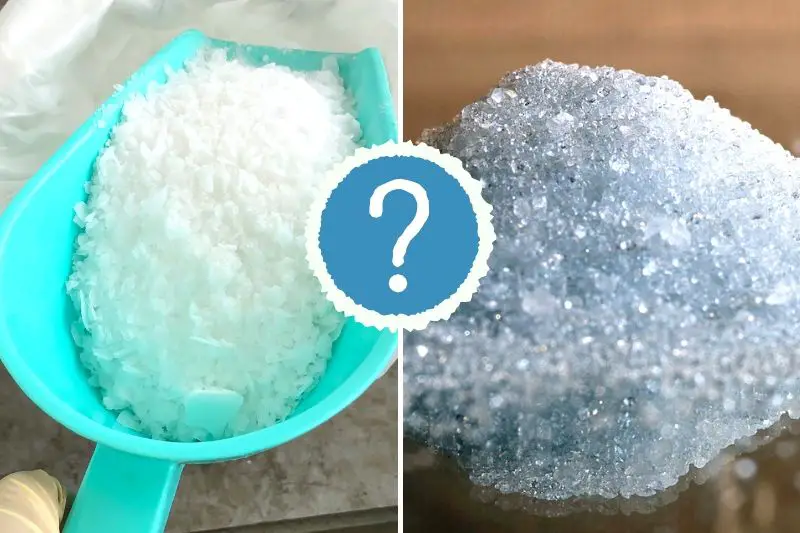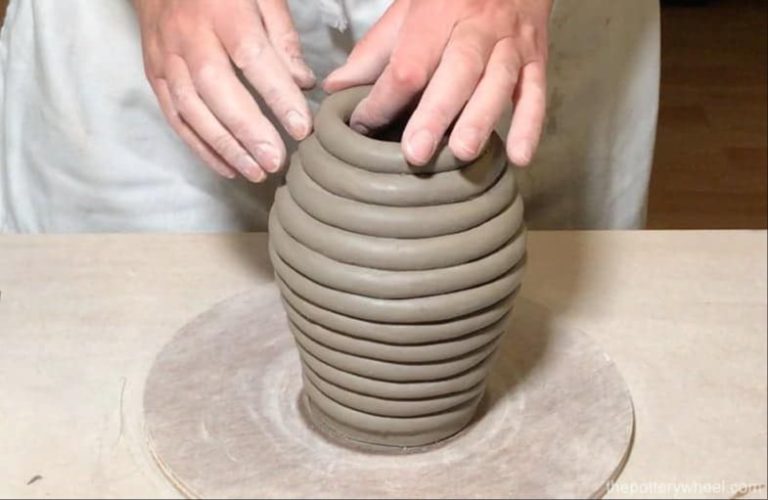What Is The Common Name For Soda Ash?
What is Soda Ash?
Soda ash, also known as sodium carbonate (Na2CO3), is an alkali chemical refined from the mineral trona or naturally occurring sodium carbonate-bearing brines (aquifers). It is an important industrial chemical that has many applications and uses (Chemical Company, 2022).
The chemical composition of soda ash is sodium carbonate. It is an inorganic salt composed of sodium ions (Na+) and carbonate ions (CO32−). The chemical formula is Na2CO3 (Webster’s Dictionary, 2024).
Soda ash is used in manufacturing glass, chemicals, soaps and detergents, and other industrial products. It is a fundamental raw material in the chemical industry and has over 70 different industrial applications (Soda Ash Company, 2023). Soda ash is used to make baking soda (sodium bicarbonate), which is used in food, pharmaceuticals, and household products. It’s also used in water treatment as a pH buffering agent and corrosion inhibitor.
References:
[1] Chemical Company. (2022). Uses of Soda Ash. https://www.chemicals.com/soda-ash
[2] Webster’s Dictionary. (2024). Soda ash Definition. https://www.merriam-webster.com/dictionary/soda%20ash
[3] Soda Ash Company. (2023). What is soda ash. https://www.etisoda.com/en/what-is-soda-ash/
Other Common Names for Soda Ash

Sodium carbonate has several other common names besides soda ash. These include:
- Washing soda
- Sal soda
Washing soda is the common name for sodium carbonate decahydrate (Na2CO3•10H2O), which is a hydrated form of sodium carbonate. It’s called washing soda because it can be used as a cleaning agent for laundering clothes.
Sal soda is another common name that refers to the anhydrous form of sodium carbonate (Na2CO3). It gets this name from its historical production process, which involved sodium chloride and sulfuric acid.
Chemical Structure
The chemical formula for soda ash is Na2CO3. This means that one molecule of soda ash contains 2 sodium (Na) atoms, 1 carbon (C) atom, and 3 oxygen (O) atoms. (PubChem)
The molecular diagram of soda ash shows the arrangement of the atoms. Sodium (Na) and carbon (C) atoms form a triangular planar shape, with oxygen (O) atoms above and below the plane of the carbon atom. The sodium atoms each donate an electron to the carbon atom, which has a double bond to two of the oxygen atoms and a single bond to the third oxygen atom.
The chemical structure gives soda ash many of its useful properties, such as being alkaline, reacting with acids, and being water-soluble.
Manufacturing Process
Soda ash is manufactured synthetically from two primary raw materials: limestone and salt brine. The predominant process used is known as the Solvay process, which was developed in the 1860s by Belgian chemist Ernest Solvay.
In the Solvay process, ammonia and carbon dioxide are passed through a concentrated salt brine solution in a special tower called a carbonation tower. This causes sodium bicarbonate (baking soda) to precipitate out of the brine. The sodium bicarbonate is then collected and heated to produce soda ash, while also regenerating ammonia and carbon dioxide which can be recycled.
According to Wikipedia, “The Solvay process or ammonia-soda process is the major industrial process for the production of sodium carbonate (soda ash, Na2CO3). The ammonia-soda process was developed into its modern form by Ernest Solvay during the 1860s. The ingredients for this process are readily available and inexpensive: salt brine (from inland sources or from the sea) and limestone (from quarries).” (https://en.wikipedia.org/wiki/Solvay_process)
The Solvay process creates a closed loop production system that recaptures most of the ammonia and carbon dioxide for reuse, making it more efficient and sustainable than earlier manufacturing methods. Today, the majority of soda ash production globally utilizes the Solvay process or a similar ammonia-soda process.
Industrial Applications
Soda ash has many important industrial applications including glass production, detergents, and water treatment.
One of the largest uses of soda ash is in glass production. Soda ash lowers the melting point of the silica sand and coke used to create glass, which saves energy costs. Nearly all glass contains soda ash. Fiberglass insulation and flat glass for buildings and vehicles are two major uses of soda ash in glassmaking.
Soda ash is also widely used in detergents and cleaning products. It helps soften water and emulsify oils, which improves cleaning and stain removal. The alkalinity of soda ash also boosts the cleaning power of detergents. Most powder laundry and dishwashing detergents contain soda ash.
For water treatment, soda ash is added to municipal water supplies to precipitate calcium and magnesium carbonates in order to soften hard water. This improves the lathering ability of soaps and helps prevent limescale buildup in pipes and boilers. Soda ash also helps adjust the pH level of drinking water. Additionally, it is used to remove chlorine after the disinfection process.
Consumer Applications
Soda ash has several common uses in consumer products, especially for baking and cleaning:
Baking Soda: Sodium carbonate is used as a leavening agent in baking. When combined with an acid ingredient like buttermilk or yogurt, it produces carbon dioxide bubbles that cause batters to rise. This helps make baked goods light and fluffy. Many baked goods recipes call for baking soda or baking powder, which contains sodium carbonate. It is an essential ingredient in a range of baked foods from cakes to cookies.
Cleaning Products: Sodium carbonate is an effective yet gentle abrasive cleaner. Many commercial and homemade cleaners include it for cutting through grease, soap scum, and stains. When dissolved in water, sodium carbonate creates an alkaline solution that can dissolve dirt and lift it from surfaces. It is commonly found in laundry detergents, all-purpose cleaners, oven cleaners, tile scrubbers, and dishwasher detergents. Sodium carbonate helps remove stains, brighten fabrics, degrease, descale appliances, and more. It is a versatile non-toxic ingredient for eco-friendly homemade cleaners.
Environmental Impact
The production of soda ash can have negative environmental impacts if not properly managed. One key concern is the safe disposal of the waste products from the manufacturing process. According to Challenges and Opportunities in Soda Ash Manufacturing, the Solvay process which is commonly used to produce soda ash releases “a calcium chloride brine waste” that must be safely contained. Improper disposal of this brine waste can lead to soil and water pollution.
The Solvay process also emits significant amounts of carbon dioxide (CO2), a major greenhouse gas. Per Can synthetic soda ash survive?, this process is “extremely energy intensive, releasing large amounts of carbon dioxide.” The CO2 emissions contribute to climate change and environmental concerns. Methods to capture or sequester the CO2 are being explored to reduce the carbon footprint of soda ash production.
Overall, responsible disposal of waste products and reducing greenhouse gas emissions are key to minimizing the environmental impacts of soda ash manufacturing. Companies should follow best practices and utilize greener production methods to produce soda ash more sustainably.
History
The earliest discovery of soda ash dates back thousands of years to Ancient Egypt, where it was produced from the ashes of burned plants. According to Etisoda, the ancient Egyptians recovered soda ash from dry desert lake beds or by burning marine plants high in sodium content. The resulting ashes were then dissolved in water to extract the sodium carbonate.
Commercial production of soda ash began in 1791 when Nicolas Leblanc developed a process to synthesize it from salt, sulfuric acid, limestone, and coal. This involved several steps to first produce sodium sulfate, then convert it to sodium carbonate. Leblanc’s process dominated the soda ash industry throughout the 1800s until the Solvay process was invented in the 1860s. The more economical Solvay process proceeds through an ammonia-soda cycle and is still the major production method today.
Global Production
China is by far the largest soda ash producer in the world, accounting for more than 50% of global output. According to IndexMundi, in 2021 China produced approximately 24.3 million metric tons of soda ash. The United States ranks second in production at around 11.5 million metric tons annually. Other major producing countries include Russia, Germany, Turkey, and India.
The leading soda ash companies worldwide based on revenue include Solvay, Tata Chemicals, FMC Corporation, OCI Company, Nirma, and GHCL, among others. Solvay is the largest producer with major facilities in the US, Europe, and Asia. Other major producers like Tata Chemicals and FMC Corporation also have a global presence and production capacities in multiple countries. While production is concentrated in China, the export market is dominated by US and European companies.
Future Outlook
The soda ash market is projected to experience steady growth over the next decade, driven by increasing demand from end-use industries like glass manufacturing, soaps and detergents, and chemicals manufacturing.
According to a report by Future Market Insights, the global soda ash market is forecast to grow at a CAGR of 4% between 2022-2032, reaching a value of over $29.6 billion by 2033 1. Key factors driving this growth include rising demand from emerging economies, expansion of the glass industry, and development of eco-friendly production methods.
Some key innovations that will shape the soda ash industry in the coming years include:
- Use of renewable energy and waste heat recovery systems to improve energy efficiency and lower emissions from manufacturing plants
- Adoption of membrane cell technology that eliminates the need for ammonia in processing
- Development of dense phase conveying systems to improve logistics and transportation
- Shift towards natural soda ash production using salt brine and limestone
As the industry moves towards greater sustainability and efficiency, soda ash producers will need to invest in next-generation technologies and greener production methods to stay competitive in the long run.



